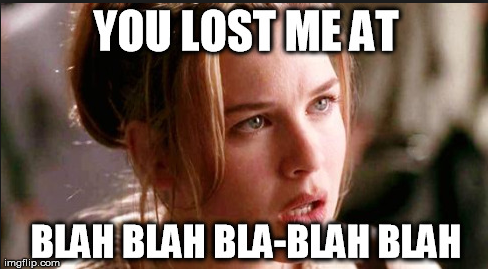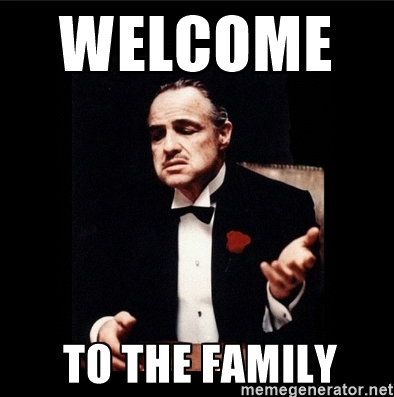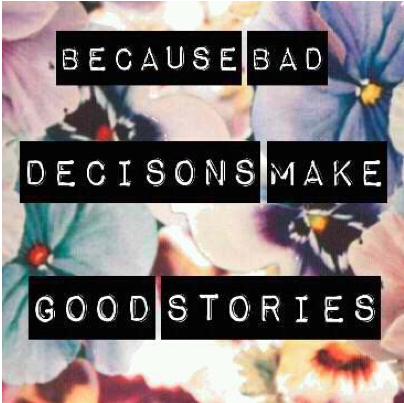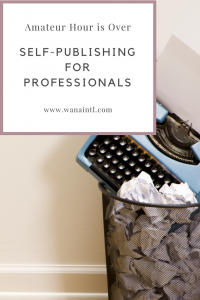
Conflict is the core ingredient required for story. It is the magical elixir with the raw power to transform a story we think we’ve heard a million times before into something wholly unique and mesmerizing. FYI, there are no new stories, only new ways of telling the same stories. Just getting that out of the way.
A Thousand Acres is basically King Lear on an Iowa farm, and Avatar is Pocahontas in Space. I could give a zillion more examples but won’t.
In fairness, this makes our job simpler. We really don’t want to create a story no one has ever heard before. Not only because it’s pretty much impossible to do in the first place, but it’s also highly risky even if we managed to pull it off. Why?
Because the story ‘never before told’ cannot possibly resonate emotionally. Humans have no emotional touchpoint for something they’ve never experienced…ever.
Resonance is Critical

Love gone wrong? Betrayal? Messed up family? Righting wrongs of the past? Clearing one’s name from being falsely accused? Rebuilding after a loss? Finally earning approval, love, or acceptance? Impacts of abuse or addiction?
This stuff we get.
Most humans have real-life experience with these ‘common’ stories. Thus, when we stick to these core human narratives, that’s when we create that deep visceral resonance that ripples through generations of readers. It’s because people can relate.
Suffering is also interesting. What? Humans are morbid. Not MY fault, but definitely good for business if you’re a writer.
Now, the degree of ‘suffering’ obviously is determined by genre (or how bad the writing is).
A cupcake cozy mystery won’t probe at wounds the way a dark literary thriller like Gone Girl might. This doesn’t change that there’s ONE singular ingredient for all stories that must be present or it isn’t a story.
My goal in this series is to explore all the elements of structure, because the purpose of structure is to generate TENSION. Story is a machine. All parts serve a purpose and must work together lest we get screeching, smoke, meltdown, then breakdown.
Before we explore other elements of building a story, let’s discuss conflict.
Conflict

If we don’t have conflict, we DO NOT have a story. PERIOD.
A story captures us (readers) with a problem, then we turn pages because there are more problems! And we cannot possibly put down a book until we know everything is okay, right?
Few readers—emphasis on FEW—turn pages to see if the writer will use even prettier descriptions, employ even wittier references to obscure literature, or come up with even more clever names for starships/kingdoms/mythical beasts.
Readers aren’t picking up a novel to see if the author knows how to use a thesaurus or test the writer’s vocabulary skills. S.A.T. and G.R.E. prep manuals do that.
Want to read one of those in your spare time? Be my guest.
Granted, everything listed above (prose, description, world-building, excellent vocabulary) can all be wonderful elements to story, but none are powerful enough ALONE to BE STORY. Only one ingredient is inherently potent enough by itself to be considered story.
That ingredient is conflict. Conflict is story.
Here I am referring to BOTH external conflict and internal conflict, though mainly external. One CANNOT exist without the other. External conflict ignites and fans the flames of internal conflict.
Internal conflict alone is the literary equivalent of a diary to our inner child. Only therapists want to read self-exploratory navel-gazing…namely because they’re paid very well to do so.
What’s going to make readers care about internal conflicts are external problems 😉 .
Confusion with Conflict

Conflict—who generates it and how—can be very confusing. I am here, hopefully, to help you make sense of it all. Today we’ll use broad strokes to help y’all see what I’m wanting you to grasp, then I’ll blog in greater detail on each aspect.
Every novel MUST have a core antagonist. I call this particular antagonist the Big Boss Troublemaker (BBT) to keep it straight in MY head. I do this because a lot of well-meaning craft books (that assumed I was WAY smarter than I was) confused the crap out of me for years by using ‘antagonist’ as a blanket term.
Also, I chose this because Troublemaker is not inherently bad, evil, or nefarious. It’s merely trouble, which is subjective. This distinction (that the BBT is not, by nature, evil) will be important later, especially for certain genres.
EVERY STORY MUST HAVE A BBT. The BBT is responsible for creating the core story problem in need of resolution. When the core problem is resolved, THIS is how we (writer and readers) know the story is over.
***If the Hobbits don’t toss the evil ring in Mt. Doom and destroy Sauron (BBT)? NOPE not over.
Problem is, the BBT—while responsible for creating the core problem—likely isn’t present on every single page. Herein lies the pickle. If the goal is to put conflict on every page, in every line, how can we possibly do that?
Easy. Much of our story’s conflict isn’t necessarily directly a result of the BBT.
In any story, conflict will have many, many faces. Often you’ll hear this referred to as the antagonist. ‘Antagonist’ is a broad term, which includes any character whose goal stands in the way of what the main character desires.
Every character can at one time wear the antagonist hat (which gets shuffled around). Allies and love interests wear it most frequently, believe it or not. I’ll give you examples how, later.
The antagonist in play is almost always a person (corporeal being), which we will get to in finer detail as to why in another post. Suffice to say, humans don’t do so well with existentialism. When our MC is pitted against anything other than another person with an opposing agenda, we risk tanking the conflict.
Bad Situations are NOT Conflict

Let me repeat. What makes readers turn pages is unresolved conflict. Conflict can only happen when opposing agendas meet.
Kristen’s riffed example:
Fifi, the teenage witch hunter must meet demonically possessed baton twirler at exactly midnight for the critical clue to who/what’s behind the drama nerds going missing.
***See, if the football team was going missing the authorities would care. But Fifi, being a long-time drama nerd and (unfortunately) a brand new witch-hunter knows she must step in to find her friends or no one else will.
This definitely IS a good story problem. Missing friends. Not to mention school administrators would loooove another reason to cut the drama program. It’s a juicy start, but not yet conflict.
For that? Add in *drum roll* MOM.
Mom, who previously worked night shift at the hospital switched THAT morning to day shift, because of her daughter’s strange behaviors and odd injuries. She wants to be there for her daughter, despite the cut in pay.
This means Fifi’s mom will be home, which gives boundless ways for any writer to sadistically torture readers. Mom being home (and NOT working at the hospital) gives a myriad of organic setbacks to generate high tension as Fifi desperately tries to sneak out to meet possessed baton twirler.
The clock ticks ever closer to midnight as Mom overcompensates to assuage her guilt for being previously absentee.
Pumpkin! I hear you’re awake. Hard time sleeping? Hold on! I’ll bring you up some hot milk like I used to.
Is mom BAD for switching to day shift? Is she a villain for not wanting her barely-legal-to-drive teen to leave the house at 11:30 P.M. on a school night (or ANY night)?
No their goals simply conflict.
Conflict is NOT Inherently BAD

Fifi’s goal is to meet possessed baton twirler to find missing drama nerds and stop the evil force (a noble goal). Mom’s goal is to be a good mom (again, a noble goal).
It is still, however, CONFLICT.
Notice how the external conflict (problems) only exacerbate internal conflict. Fifi is trying to shield her mother from vastly dangerous supernatural forces. Mom is intent on protecting her daughter and making up for being a ‘bad’ mother by being a vigilant mother.
Yet…
As tensions mount, secrets, baggage, and benevolent lies pile up like old rags soaked in ‘oil’ (guilt, remorse, anger) waiting to inevitably go BOOM.
This is why other characters with conflicting agendas are GOLD.
If all that is keeping Fifi from meeting the possessed baton twirler is bad weather, a lost set of keys, twisted ankle, a broken down car, these are bad situations not conflict. Bad situations are useful only for the momentary setback, but they lack the same power to inflame the internal conflict.
Can we use bad situations? HECK YEAH…just not at the expense of authentic dramatic tension, which can only be created by antagonists.
Why the Confusion?

One reason many emerging writers get confused (I sure did) is that the term ‘antagonist’ is often used interchangeably with ‘villain’ which is bad (or at lease incomplete) teaching. Not all stories have villains but ALL stories must possess a BBT and antagonists throughout. As y’all see with my Fifi example, Mom is an antagonist, but hardly a villain.
Antagonists are like ice cream, and ‘villains’ are like double-fudge ice cream. While all double-fudge ice cream IS ice cream, not all ice cream is double-fudge 😉 .
Do We NEED a Villain?

Yes and no. If your character is up against something existential, that existential thing should be pretty BAD (death, disease, poverty, alcoholism, racism, abuse, etc.). Problem is, these ‘concepts’ need to be represented via a proxy which may or may NOT be a villain.
I know, a brain-bender but work with me. Breathe.
I like to use the example of Steel Magnolias which does have a villain—DISEASE/DEATH. Ah, but the ‘Villain’ BBT is represented via proxy by the daughter Shelby.
Shelby has life-threatening diabetes. She tries to adopt but fails and longs to be a mother. Her decision to get pregnant knowing it very well could cost her life creates the core story problem (making SHELBY the BBT).
M’Lynn is the dutiful mother who’s there to take care of everything and everyone. Her goal is to outlive her daughter, to protect her. To give her very life if need be to save her daughter.
In this situation, however? She can’t. She has no control (which is her problem. btw).
Shelby’s desire to be a mother conflicts with M’Lynn’s desire for her daughter to outlive her and to live a long and happy life.
BUT this decision is critical for M’Lynn for grow, to evolve from being a control freak, and embrace all of life—even the ugly parts—to get to the truly good parts (I.e. the grandson Jackson).
Many Faces of NOPE

All stories must have a BBT that creates the core story in need of being resolved. Once we have defined this core story problem, casting becomes simpler. Ideally, we want to cast an MC who’d rather crawl across razor-wire than confront the story problem. But what is on the OTHER side outweighs the fear (most of the time).
Then we can layer in love interests, allies, threshold guardians, minions and all the BBT has to throw at the MC on every single page. Yes, it CAN be done and I will blog more on how. For more about that now? Buy a copy of HOOKED by Les Edgerton. He’s my mentor and one of the toughest yet finest writing teachers ever.
Anyway, this colorful cast of antagonists (friend and foe) and all their baggage is what will keep readers riveted to their seats wanting to know HOW IT ALL ENDS! By crafting organic opposition onto every page (every line), this is how we steadily wind tension tighter and tighter until it’s almost ready to snap nerves.
Readers will be begging for release. Hey, it isn’t called the climax for nothing *rolls eyes* . Alas, now that y’all grasp what I mean by conflict, we can now proceed to the next layer of learning next post.
For anyone who longs to accelerate their plot skills, I recommend my On Demand Plot Boss: Writing Novels Readers Want to BUY. Two hours of intensive plot training from MOI…delivered right to your computer to watch as much as you like 😀 .
Or to make stabbing motions at my head with a pen. Die! Die! Kristen we loves you but hates you!
I also am offering my Bullies and Baddies: Understanding the Antagonist on March 15th (7-9 EST) recording included with purchase if you can’t make it. This class is for in-depth training on how to balance all types of antagonists for maximum impact.
What Are Your Thoughts?
Has the term antagonist confused you too? Heck, it sure confused me. Same with conflict. I need more conflict? Okay, I can put in a car chase. Kinda weird for a chick-lit, but alrighty! I do love hearing from you. Where you struggle, because we ALL do. What you want to know more about? Where you get stuck, etc.
I look forward to helping you guys become stronger at your craft. What are some of your biggest problems, hurdles or misunderstandings about plot? Where do you most commonly get stuck?
I love hearing from you!
And am not above bribery!
What do you WIN? For the month of FEBRUARY, for everyone who leaves a comment, I will put your name in a hat. If you comment and link back to my blog on your blog, you get your name in the hat twice. What do you win? The unvarnished truth from yours truly. I will pick a winner once a month and it will be a critique of the first 20 pages of your novel, or your query letter, or your synopsis (5 pages or less).
By the way, yes I also offer classes. I want y’all to write amazing books because that means more word of mouth sales. Alas, we still should learn the business of our business so I hope y’all will check out the classes below.
Business of the Writing Business: Ready to ROAR!
 Instructor: Kristen Lamb
Instructor: Kristen Lamb
Price: $55.00 USD
Where: W.A.N.A. Digital Classroom
When: Thursday, February 15, 2018, 7:00-9:00 p.m. EST
Being a professional author entails much more than simply writing books. Many emerging authors believe all we need is a completed novel and an agent/readers will come.
There’s a lot more that goes into the writing business…but not nearly as much as some might want us to believe. There’s a fine balance between being educated about business and killing ourselves with so much we do everything but WRITE MORE BOOKS.
This class is to prepare you for the reality of Digital Age Publishing and help you build a foundation that can withstand major upheavals. Beyond the ‘final draft’ what then? What should we be doing while writing the novel?
We are in the Wilderness of Publishing and predators abound. Knowledge is power. We don’t get what we work for, we get what we negotiate. This is to prepare you for success, to help you understand a gamble from a grift a deal from a dud. We will discuss:
- The Product
- Agents/Editors
- Types of Publishing
- Platform and Brand
- Marketing and Promotion
- Making Money
- Where Writers REALLY Need to Focus
A recording of this class is also included with purchase.
Self-Publishing for Professionals: Amateur Hour is OVER
 Instructor: Cait Reynolds
Instructor: Cait Reynolds
Price: $99.00 USD
Where: W.A.N.A. Digital Classroom
When: Friday, February 16, 2018, 7:00-10:00 p.m. EST
Let’s get down to brass tacks. Are you going to go KDP Select or wide distribution with Smashwords as a distributor? Are you going to use the KDP/CreateSpace ISBN’s or purchase your own package? What BISAC codes have you chosen? What keywords are you going to use to get into your target categories? Who’s your competition, and how are you positioned against them?
Okay, hold on. Breathe. Slow down. I didn’t mean to induce a panic attack. I’m actually here to help.
Beyond just uploading a book to Amazon, there are a lot of tricks of the trade that can help us build our brand, keep our books on the algorithmic radar, and find the readers who will go the distance with us. If getting our books up on Amazon and CreateSpace is ‘Self-Publishing 101,’ then this class is the ‘Self-Publishing senior seminar’ that will help you turn your books into a business and your writing into a long-term career.
Topics include:
- Competitive research (because publishing is about as friendly as the Red Wedding in Game of Thrones)
- Distribution decisions (because there’s actually a choice!)
- Copyright, ISBN’s, intellectual property, and what it actually all means for writers
- Algorithm magic: keywords, BISAC codes, and meta descriptions made easy
- Finding the reader (beyond trusting Amazon to deliver them)
- Demystifying the USA Today and NYT bestselling author titles
- How to run yourself like a business even when you hate business and can’t math (I can’t math either, so it’s cool)
Yes, this is going to be a 3-hour class because there is SO much to cover…but, like L’Oréal says, you’re worth it! Also, a recording of this class is also included with purchase.
The class includes a workbook that will guide you through everything we talk about from how to do competitive research to tracking ISBNs and distribution, and much, much more!
Time is MONEY, and your time is valuable so this will help you make every moment count…so you can go back to writing GREAT BOOKS.
DOUBLE-TROUBLE BUSINESS BUNDLE
BOTH classes for $129 (Save $25). This bundle is FIVE hours of professional training, plus the recordings, plus Cait’s workbook to guide you through everything from how to do competitive research to tracking ISBNs and distribution and more.








15 comments
4 pings
Skip to comment form
I always get a bit shuddery at the “oh the conflict is with herself” you sometimes hear. That’s really boring to read, though. How do you convey someone battling with themselves in a way that makes you root for them?
Author
I will address that in another post. Namely, through the external problems/conflict. For instance, in ‘Gone Girl’, Nick Dunne has always been able to coast along, never make hard choices, and never ‘be’ the bad guy. He possesses a pathological need to be liked (which is his undoing).
It’s only when his wife Amy goes missing and Nick becomes the prime suspect that he’s forced to realize that deep down, he is NOT a nice man. His ‘nice guy facade’ is just that…a facade. In truth, he’s a liar, a cheat, and a really bad husband. It’s OUTSIDE pressure (the investigation) that forces Nick to realize the internal of WHO he is, so he can own it and change.
Nick’s internal flaws/demons are why his life has always faltered on some level. Until Amy goes missing under extreme and suspicious circumstances, he’d always been able to hide, deflect, rationalize, or blame. He would have been able to continue along this way, never realizing the truth of himself EXCEPT for the core story problem—his missing wife.
It is ONLY when outside pressure mounts—and his web of secrets, lies, half-truths, and betrayals are revealed—that Nick MUST own up to WHO he is. He has to or he WILL go to prison and likely get the death penalty.
He IS is own worst enemy.
Every protagonist IS in the beginning (that is why characters ARC).
BUT, in this extreme circumstance, Nick must come clean if he wants to clear his name. IF he fails. IF he resorts to the half-truths, redirects, and white lies that have always served him, he will lose.
Just purchased Hooked. Thanks for the recommendation. (Your post hooked me on the topic!)
I like the way you explain the conflict as the BBT.
Your comment that bad decisions make good stories is interesting. I agree with it as long as the bad decisions feel like good ones when the character is making it.
I’ve seen far too many “too dumb to live” characters in my genre of choice, and I’ve put down a lotta books because of it.
Author
Agreed and for a later lesson 😉 .
I always think of Black Swan and how that story took an antagonistic idea, concept, and personified it with Mila Kunis. Artfully done, and I imagine it is a tough feat for a novice writer to pull off effectively.
Author
That is called the ‘unreliable narrator’ and is an advanced structure. I might not get into it in the blogs, but will give a class on how to pull it off. For now, read ‘Fight Club.’
I needed this. During my next edit, this will be my focus.
I found this EXTREMELY helpful. Thank you!
This might sound a bit single minded. But which is better writing what people enjoy reading or writing what you enjoy writing? I think that one should always write what they choose to read themselves as if you can’t enjoy it, who will?
Any thoughts on that would be welcome
Tom Gould
Author
If we want to do this professionally, then the reader takes precedent. I imagine if you examined the books you love with the litmus of what I am teaching here in these posts, you will see this is all present. When we first desire to become writers, I imagine it is much like a child longing to one day be an illusionist. All we see is the magic, the disappearing doves, the woman who vanishes in a whoosh of glitter or beneath a billow of silk.
Then we apprentice and see all the mirrors, the trap doors, the wires, the misdirection. For a time, it can and will feel…un-fun. BUT, as we master these illusions, add our own flair, even get skilled enough to invent our OWN bigger and better illusions, the joy returns because we remember the crowd. That WE were once in that crowd too and we LONG to mesmerize them as we once were. We want nothing more than to pass on magic, OUR magic, perhaps even a better variation of MAGIC.
Besides, structure done properly is INCREDIBLY fun to write. I only trust you bear with me and this series. Once you have this down, it will be second nature and that is where the incredible FUN for you and especially your readers will begin.
At the end of the day, yes writing IS fun and should be. But it is also a LOT of work, a LOT. Most readers can’t (and never will) appreciate all the hard work that goes into this vast illusion (a novel) any more than a Vegas audience can fully grasp the incredible work that goes into creating a one-evening Criss Angel show.
The hard and often fruitless work comes when we want to skip learning the tricks of the trade so to speak. Just as there are fundamentals to magic shows that have been passed on for centuries (then modified, improved, changed, etc.) same with story craft. The training is what makes the difference between mediocre and magnificent. So hang in there. I promise, it does become far more enjoyable once we nail the essentials 😉 ,
You explained conflict so clearly. Thanks for this. I love the idea of the BBT. I’m looking forward to reading more.
I’ve always thought one reason a BBT is better than some purely physical problem is that people have reasons to keep trying, for whatever their agenda is.
If Fifi loses her car keys and has to run to the meeting, those lost keys won’t find Fifi missing and snoop through her diary or follow her to the school and Impending Doom– and of course Mom will. Worse, Mom will keep pushing Fifi and making her wonder not only what she’ll do next but if she might actually be right, at least right enough to make Fifi rethink her own agenda.
We spend a lot more of our lives dealing with Moms than missing keys. So of course we’re social animals hard-wired to focus on human conflicts; we call some “villains,” some not. A story made of up lost-key problems would have to strain to build a fraction of the complications that one good human conflict can… and in the end, all it’s done is teach you not to lose your keys. People, and their agendas, are LIFE.
Thank you so much for such a clear way of explaining conflict. I’m looking forward to the next post. Can’t wait.
Now I’m off to examine the work I’m in the process of the first re-write for ways to i prove the conflict there.
A very interesting article and on reflection this is how I structure all my stories. I learned a long time ago that there can be conflict without drama but there cannot be drama without conflict. I appreciate the different ways you describe conflict especially the inner conflict. I try to show my readers (if any) that nobody (especially the hero) is perfect. He forgets his wife’s birthday, forgets to feed his cat, doesn’t bother to water his neighbour’s plants at the times requested, he (or she) is an asshole, a saint, a saviour; he (or she) is you and me, is normal.
[…] https://authorkristenlamb.com/2018/02/24039/ […]
[…] Every story needs conflict. Donald Maass considers the tension that arises when worlds collide, and Kristen Lamb explores conflict: elixir of the muse for timeless stories readers can’t put down. […]
[…] post in our structure series, I introduced the core antagonist, what I call the Big Boss Troublemaker. The BBT is our central […]
[…] Conflict: Elixir of the Muse For Timeless Stories Readers Can’t Put Down […]